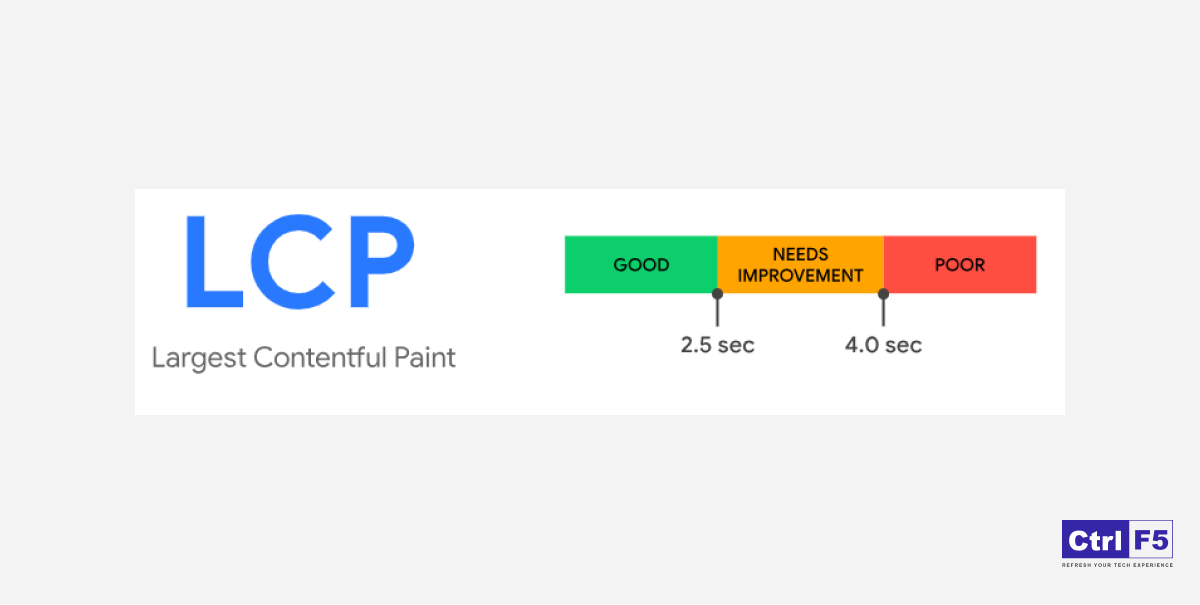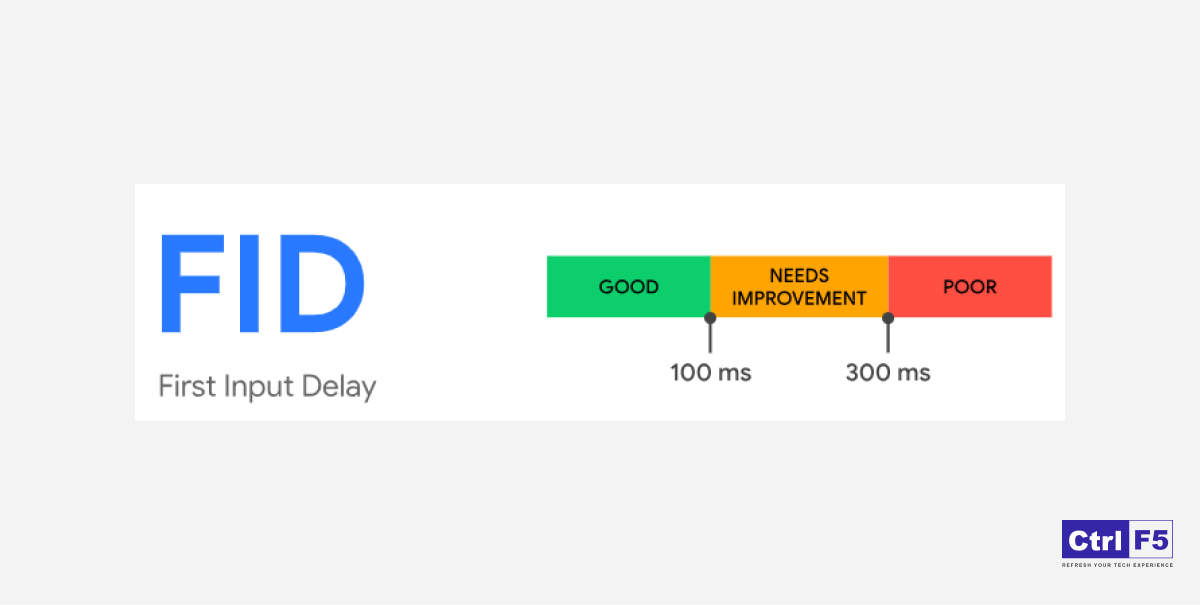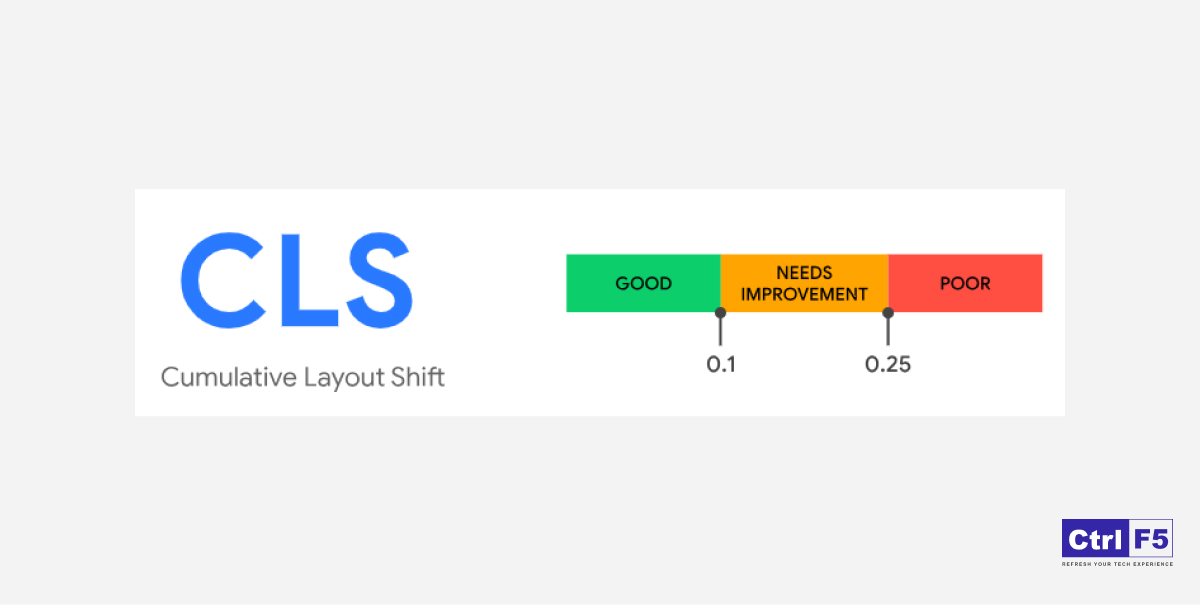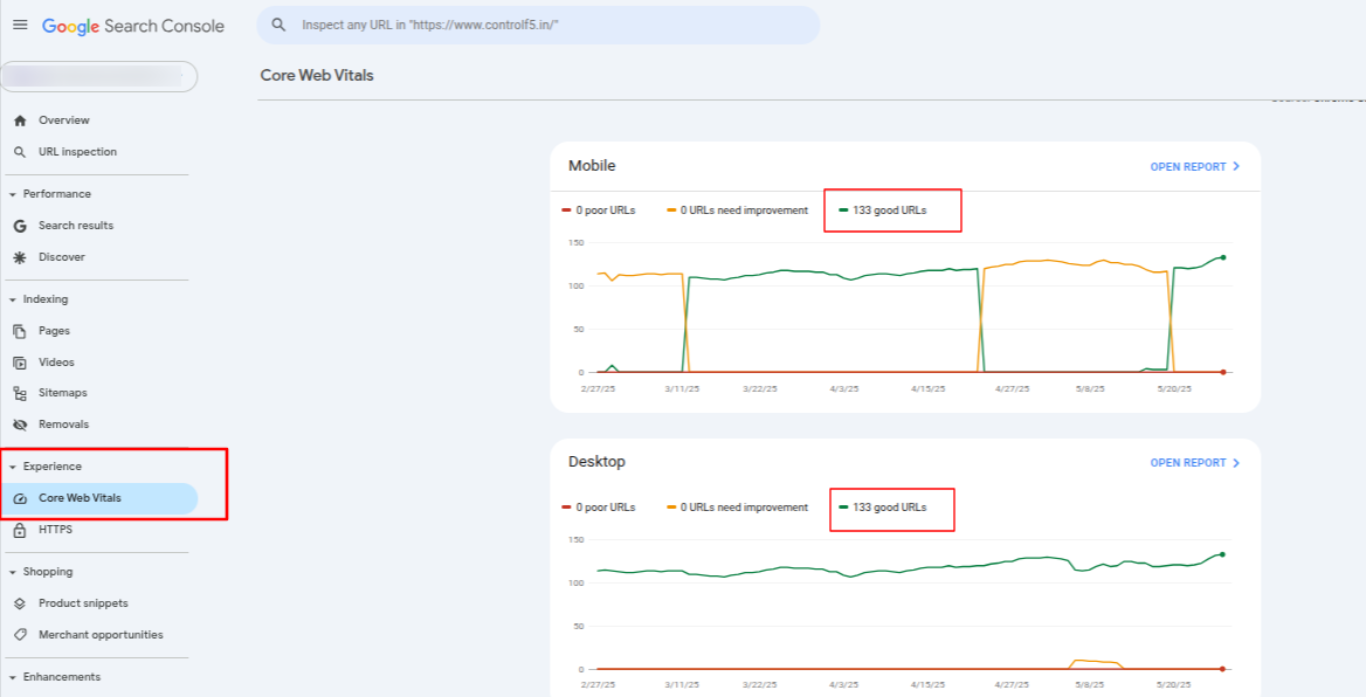
How to Improve Google Core Web Vitals Scores – 8 Strategies
- Anurag Pandey
- Last updated on May 28, 2025
- eCommerce, How To Guide, HTML, WordPress
- 11 minutes read
Table of Contents
ToggleBuilding a website is just the beginning. What truly matters is how your website performs once it’s live, such as is it’s fast enough.
Does it rank well on Google?
Are users staying engaged or bouncing off?
Today, Google Core Web Vitals are the standard for measuring real user experience across loading website speed, interactivity, and visual stability. These aren’t just technical details, they directly impact your SEO, bounce rate, and conversion rate.
Increasing Core Web Vitals score is no longer optional, it’s a competitive necessity. Whether you run an eCommerce store, blog, website, or SaaS product, optimizing your website performance metrics is key to staying ahead.
In this blog, we will break down the 3 Core Web Vitals metrics, how to measure them, and 8 proven strategies to increase your Core Web Vitals score and align with Google’s page experience update.
What Are Core Web Vitals?
Google Core Web Vitals are a set of website performance metrics introduced by Google that measure real-world user experience on websites. These metrics are now part of Google’s ranking algorithm under the Page Experience Update, meaning they can directly impact your SEO performance.
They focus on three key aspects of user interaction:
How quickly does content load?
How responsive the website is to user input?
How visually stable the page is during loading?
In other words, Google Core Web Vitals help determine if your website is fast, smooth, and frustration-free for users.
Google considers these metrics as essential signals because a poor user experience, such as delays in interaction or unexpected layout shifts, can lead to higher bounce rates and lower engagement.
That’s why optimizing Core Web Vitals is crucial not only for search visibility but also for conversion rates and customer satisfaction.
Improving your Core Web Vitals ensures your visitors stay longer, interact more, and trust your brand.
Understanding the 3 Key Metrics
Google’s Core Web Vitals focus on three key metrics, such as LCP, FID (formerly INP), and CLS, that reflect real user experience.
Each metric highlights a critical area of performance: loading website speed, responsiveness, and visual stability. Let’s understand them in detail:
1. Largest Contentful Paint (LCP)
What it measures: LCP measures the time it takes for the largest visible content element, like a banner image or main heading, to fully appear on the screen. This typically represents the most important part of the page from a visual standpoint.
Why it matters: If your main content takes too long to load, users might perceive your website as slow or broken. A fast LCP ensures that users see meaningful content quickly, which is essential for retaining their attention and reducing bounce rates.
Ideal Score: To provide a good user experience, LCP should occur within 2.5 seconds of the page starting to load for the majority of users.

2. First Input Delay (FID) / Interaction to Next Paint (INP)
What it measures: FID tracks the delay between when a user first interacts with your website, like clicking a link or tapping a button, and when the browser begins responding. INP, which is now replacing FID, provides a more detailed measure of how responsive a website is during real interactions over time.
Why it matters: Long delays in responsiveness can frustrate users and make your website feel unresponsive, especially on mobile devices. INP captures the user’s perception of responsiveness throughout their visit, making it crucial for engagement.
Ideal Score: For a smooth experience, aim for INP under 200 milliseconds, ensuring interactions are processed almost instantly.

3. Cumulative Layout Shift (CLS)
What it measures: CLS quantifies unexpected layout movements while the page is loading. These shifts happen when images, fonts, or dynamic elements load in a way that pushes other content around.
Why it matters: Unexpected shifts can cause users to click on the wrong buttons or lose their place while reading. This leads to frustration and a poor overall impression of your website’s quality and usability.
Ideal Score: A good CLS score is less than 0.1, indicating your layout is stable and visually consistent as the page loads.

How to Measure Core Web Vitals
Understanding your current website performance metrics is the first step in Google Core Web Vitals optimization.
Below are the most trusted tools to evaluate and monitor your website’s loading speed, interactivity, and visual stability.
| Tool | Purpose / Features |
| Google PageSpeed Insights | Analyzes real user and lab data with improvement tips. |
| Lighthouse (DevTools) | Audit website performance, SEO, and Core Web Vitals in Chrome. |
| Google Search Console | Shows Core Web Vitals data from real-world Chrome users. |
| Web.dev | Offers guides and tools for performance and SEO Factors. |
| Chrome UX Report (CrUX) | Shares real-user experience data across millions of websites. |
8 Proven Strategies to Improve Core Web Vitals
Optimizing Google Core Web Vitals means improving how your website loads, responds, and behaves visually for real users.
These 8 actionable Core Web Vitals strategies target the three key metrics, LCP (Largest Contentful Paint), INP (Interaction to Next Paint), and CLS (Cumulative Layout Shift), to increase the website speed, interactivity, and stability.
1. Optimize Image Size and Format
Heavy, uncompressed images are often the primary cause of slow page loading.
Website developers can use tools like TinyPNG, ImageOptim, or Squoosh to compress images without sacrificing quality.
You need to adopt modern image formats such as WebP or AVIF, which offer smaller file sizes compared to traditional JPEG or PNG.
Implement responsive images using srcset and sizes so devices only load what they need.
So optimizing image size and format directly improves LCP, helping users see meaningful content faster.
Share if you have a wordpress website and are looking for speed optimization, then this article can help you: 7 Steps to Optimize a Landing Page on WordPress
2. Implement Lazy Loading
Lazy loading defers the loading of offscreen images and iframes until the user scrolls to them. This reduces initial page weight and speeds up website loading time, especially on long pages with lots of media.
You can easily implement this using the loading=”lazy” attribute on </img> and <iframe>tags.
Lazy loading increases LCP by allowing critical content to load first while deferring non-essential elements.
3. Use a Content Delivery Network (CDN)
A CDN stores copies of your website’s static files (like images, scripts, and stylesheets) on servers across the globe. When users access your website, the files are served from the nearest server, reducing the distance data travels and improving Time to First Byte (TTFB).
This significantly improves LCP, INP, and overall website loading speed, especially for international traffic.
Leading CDNs include Cloudflare, Bunny.net, and Amazon CloudFront.
4. Minify CSS, JavaScript, and HTML
Minification removes unnecessary characters like whitespace, comments, and formatting from your website’s code, making it smaller and faster to load.
Website developers can use tools like Terser for JavaScript, CSSNano for CSS, and HTMLMinifier to compress HTML files.
Also, you need to consider combining files where possible to reduce HTTP requests.
These practices improve both LCP and INP by reducing render-blocking scripts and speeding up page parsing.
5. Reduce Third-Party Scripts
Excessive third-party scripts, from chat widgets to tracking pixels, can drastically slow down your website and delay user interactions.
You need to audit your website using Lighthouse or Chrome DevTools to identify scripts that may be non-essential or poorly optimized.
Load third-party scripts asynchronously or defer them when not critical to the initial user experience.
Managing these elements helps reduce INP and improves overall website responsiveness.
Avoid the javascript
6. Improve Server Response Time
Your server’s speed is the foundation of your website’s performance. The website owner must choose a reliable, high-performance hosting provider and use caching mechanisms (like object caching, full-page caching, or CDN caching) to serve content faster.
Also, optimize backend performance by minimizing database calls, eliminating plugin bloat (for WordPress), and cleaning up scripts.
A fast server benefits all three Google Core Web Vitals: LCP, FID, and CLS.
7. Preload Key Resources
Preloading tells the browser to prioritize loading specific assets early, like fonts, hero images, or important scripts.
These Google Core Web Vitals strategies ensure critical content is available immediately, reducing delays in rendering above-the-fold sections.
You can use the <link rel=”preload”> tag for key assets and make sure they are loaded in the correct order. Preloading improves LCP and perceived load time by focusing resources where they matter most.
8. Avoid Layout Shifts with Stable UI Elements
Unexpected layout shifts during loading frustrate users and lower your CLS score. Reserve space for images, ads, iframes, or dynamic components by always specifying their width and height in CSS or HTML.
You must avoid injecting content above existing elements unless necessary. Using techniques like CSS aspect-ratio boxes also helps maintain visual consistency across devices and screen sizes.
Pro Tip: Don’t try to fix everything at once. Start with what’s impacting your users the most, usually LCP or INP, and work your way through. Core Web Vitals require continuous, data-driven refinement, not a one-off fix.
Related Read: How to Make Your React Website SEO-Friendly In 10 Steps
9. Google Search Console
One of the easiest ways to monitor your website’s Core Web Vitals is through Google Search Console. Once you log in, you will find a dedicated Core Web Vitals report under the “Experience” section.
This report separates performance issues by mobile and desktop, showing you exactly which pages need improvement. It highlights whether a page is Good, Needs Improvement, or Poor, based on real-user data from Chrome.
To pass Core Web Vitals, aim to keep LCP under 2.5 seconds on all key pages. Use this report to prioritize the most problematic URLs, fix performance issues, and track progress over time. It’s a powerful tool for improving your site’s ranking and user experience.
How Often Should You Audit Your Core Web Vitals?
| When to Audit | Why It Matters |
| After major updates | Updates may impact website speed or layout. |
| After a new plugin or app is installed | Third-party scripts can slow down performance. |
| Monthly for active websites | Ensures consistent performance and early issue detection. |
| Before/after redesigns or migrations | Structural changes can affect Core Web Vitals. |
| Ongoing via tools (Lighthouse CI, GSC) | Enables real-time monitoring and alerts. |
Conclusion
Improving your Core Web Vitals isn’t just about ticking off a Google checklist, it’s about making your website faster, more responsive, and more enjoyable for your visitors. These 8 strategies will help you boost user experience, reduce bounce rates, and improve your visibility in search results.
Whether you have a Shopify store, a WordPress blog, or a custom SaaS platform, your website’s performance directly impacts traffic, engagement, and sales.
If you are looking to optimize Core Web Vitals or need help with Search Engine Optimization, website speed, or performance tuning, our team at ControlF5 is here to help.
Let’s make your website faster, smarter, and search engine-friendly. Contact us today for a free consultation.
Frequently Asked Questions (FAQ)
Question: What is a pass score for Core Web Vitals?
Answer: To pass Core Web Vitals, your website must meet the following thresholds for at least 75% of real users:
- LCP (Largest Contentful Paint): under 2.5 seconds
- INP (Interaction to Next Paint): under 200 milliseconds
- CLS (Cumulative Layout Shift): under 0.1
Passing all three metrics is considered a “good” score.
Question: What are LCP and CLS?
Answer:
- LCP (Largest Contentful Paint): Measures how long it takes the largest visible content (like an image or heading) to load.
- CLS (Cumulative Layout Shift): Measures unexpected layout movements during page load that impact visual stability.
Both are key Core Web Vitals metrics affecting how users perceive speed and usability.
Question: How important are Google Core Web Vitals?
Answer: Very important, Core Web Vitals are part of Google’s ranking algorithm under the Page Experience update. They directly affect your SEO guidelines, user engagement, bounce rate, and conversions. A fast, stable website not only ranks better but keeps visitors happy and engaged.
Question: What happens if you fail Core Web Vitals?
Answer: Failing Core Web Vitals can lead to lower search rankings, poor user experience, and higher bounce rates. Your website may also load slowly or behave unpredictably, causing frustration for users, especially on mobile devices. Over time, this can affect your traffic and revenue.
Anurag Pandey
I’m Anurag Pandey, Founder & CEO of ControlF5, with 17+ years of experience in building eCommerce solutions, web design, and mobile applications. I specialize in WordPress website design, Shopify store development, and scalable mobile apps based on growing digital brands. My work merges performance-focused UI/UX with advanced integrations, delivering optimized, conversion-ready solutions. At ControlF5, we help eCommerce businesses scale through custom storefronts, mobile-first design, and smooth technology adoption—whether on Shopify, WooCommerce, or native mobile apps. My passion is helping eCommerce brands turn digital ideas into high-performing, user-centric products.
Recent Posts
Categories
Artificial intelligence, ChatGPT, Awards, Case Studies, CSS, eCommerce, Events, Go High Level, How To Guide, HTML, IT Augmentation Service, MERN Developer, Mobile Apps, Android, iOS, MVP, React Js, Remote Developers, SaaS, Shopify, Shopify Apps, Shopify Plus, Uncategorised, Website Design, Woocommerce, WordPress
Hire Developers
About us
ControlF5 has become a leading Web Design and Mobile app Development company in India since 2012, and has a renowned name in the industry.
Popular Posts
Tags
AI
App Development
Artificial Intelligence
b2b ecommerce solution provider
best ecommerce platform
best ecommerce website builder
best ecommerce website builder Shopify
best Shopify apps
Business Growth
ControlF5
E-commerce
eCommerce
eCommerce Development
ecommerce website builder
ecommerce website using Shopify
Entrepreneurship
future of WordPress
GoHighLevel
Hire Remote Developers
Hire Shopify Developers
Hire Shopify Experts
Hire Wordpress Developers
Mobile App Design
Mobile App Development
SEO
set up shopify store
Shopify
shopify case studies
shopify developers
shopify development
shopify dropshipping
shopify experts
shopify plus
shopify store
shopify website builder
Technology
User Experience
web development
website
Website Design
WooCommerce
Wordpress
WordPress developers
wordpress development
wordpress experts
Related Articles

Top BNPL Providers in the GCC for Shopify Stores: Boost ecommerce Sales with BNPL
Anurag Pandey
8th July 2025
Buy Now, Pay Later (BNPL) is changing the way people shop online in the GCC fast. In countries like Saudi Arabia, the UAE, Kuwait, and Bahrain, customers now expect flexible payment options at checkout.
How to Create a Quiz in GoHighLevel: Step-by-Step Guide for Lead Generation
Anurag Pandey
4th July 2025
Hi, I am Anurag Pandey, and I work closely with businesses and agencies to build powerful automation and lead generation systems using GoHighLevel.
How to Connect Your WordPress Website with GoHighLevel for Marketing Automation
Anurag Pandey
20th June 2025
As digital marketing becomes more AI automation-driven, businesses using WordPress are looking for ways to manage lead capture, follow-up, and client management without combining dozens of tools.












